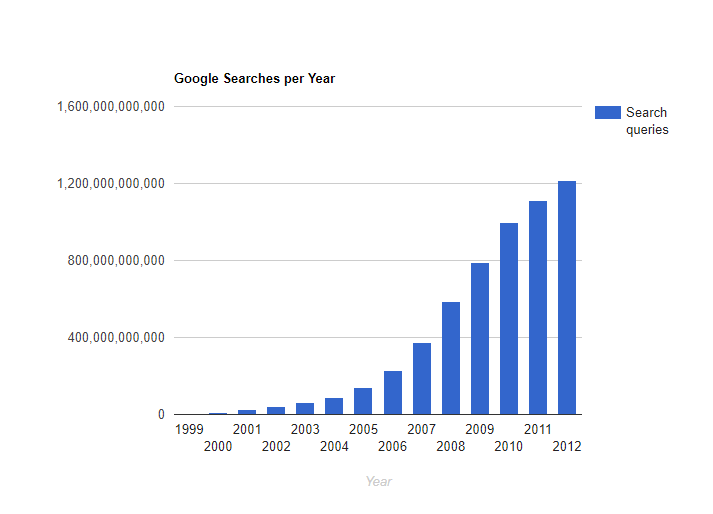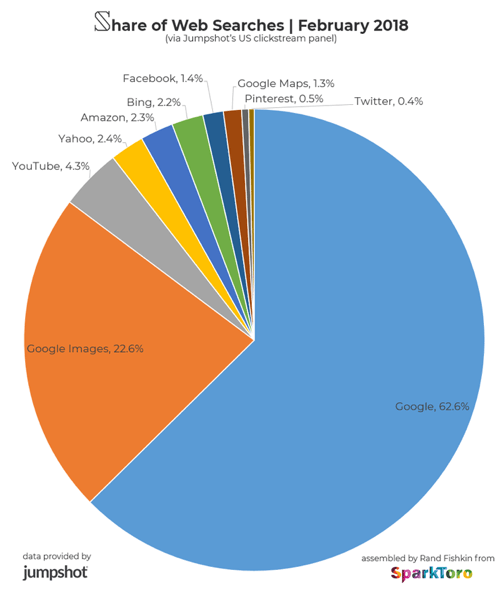Search is more than Google: Mastering vertical search optimization
Vertical search engines, mobile and voice trends seem to be reshaping the search landscape, says contributor Jim Yu. Create a cohesive content strategy across a number of verticals and increase the touch points you have with consumers.
 Whether spoken, typed or tapped, search queries are the medium through which consumers discover information and make decisions.
Whether spoken, typed or tapped, search queries are the medium through which consumers discover information and make decisions.
Search is all around us; it is embedded into smartphone devices and is the fulcrum of artificial intelligence (AI)-powered digital assistants. As search engines develop in sophistication, this relationship with consumers will only strengthen over time.
Moreover, recent research shows that mobile now accounts for as much as 57 percent of total search traffic. Search has become more powerful, dynamic and fragmented.
While this brings some challenges, it also brings great opportunity.
Opportunity knocks
The sheer quantity and variety of content online is necessitating this change.
Almost 45 percent of people watch more than an hour of video online each week on either Facebook or YouTube; Snapchat users share over 500,000 photos every minute; and according to Internet Live Stats, Google processes over 3.5 billion queries every day.
Even a search engine as universal (in many senses) as Google must evolve constantly to ensure it can serve the content its audience craves.
In order to sift through the information at their fingertips and arrive at the right result as quickly as possible, an increasing number of consumers prefer the specialized nature of a vertical search engine. For their part, search engines like Google are at pains to deal with the fragmented nature of both content and consumer demand within their own ecosystem.
At the crossroads of these trends, the rise of the vertical search engine has organically occurred — and it has significant implications for all marketers.
What is a vertical search engine?
Put simply, a vertical search engine focuses on one specific industry or type of content.
Common examples would include a travel search engine like Kayak, real estate site Trulia, or the image-based interface of Pinterest.
The term “vertical” applies to both the indexation and serving of content, which is neatly organized by category. Product searches may take place on Amazon (research shows this to be the most common starting point for product searches), or a consumer may go to a site like Indeed to look for a new job.
These slimmer indices of content have the benefit of a pure focus on one area of activity or business, which can facilitate faster, more accurate results for users.
For marketers with one specific type of product or service to sell, the lure of vertical search can be clear, too. They can meet their audience when their search intent is overt and can focus their energies on a platform that they know will deliver results.
This is not a new phenomenon, however.
Google’s universal search, which indexes and ranks image results alongside video and local listings, is an aggregation of verticals into what appears to be a more conventional, horizontal search engine. Recent moves into the jobs market, along with a revamped flights search engine, show Google’s ambitions to develop specific new technologies to gain market share in profitable verticals.
Google also indexes content hosted on vertical search engines, so it is possible to see social media and video results (from Twitter and YouTube, for example) within Google results. There can be no doubt that Google is observing changes in users’ behavior and wants to maintain their attention before they start their searches elsewhere.
Before marketers assess where to place their emphasis, it is worth assessing just how significantly vertical search is changing the landscape.
How is vertical search changing the search landscape?
If we analyze the recent clickstream data, we can see that vertical search is still taking off, outside of Google.
Google Web Search has merged with Google Images and Google Maps, and the likes of YouTube, Pinterest and Amazon are in the ascendancy while still remaining minor players in the grand scheme.
If we home in on the share of searches for all platforms in February 2018, it becomes clearer still that vertical search engines cater to specialized — but still very lucrative — audiences. Sophisticated marketers will pay close attention to search intent, as well as sheer search quantity.
The innately commercial nature of Amazon searches will be of interest to retailers, while Pinterest reports that 97 percent of its searches are non-branded.
Both of these platforms are improving their paid search offering at a rapid rate, which is again a sign of their increasing prominence in the search landscape.
Facebook, meanwhile, remains a significant influence on purchase behavior, with 36 percent of consumers using the social network to research new products. All of this is shaped by the adoption of voice-first devices, which surpassed 30 million units in the US alone in 2017.
Digital assistants do not typically show a conventional set of search listings, but rather source the most authoritative answer from one database.
Apple’s Siri now defaults to Google rather than Bing when it cannot provide a quick answer, but the growth of Amazon’s Echo devices provides a clear threat to Google’s hegemony.
We are therefore witnessing a lot of fragmentation across searcher behavior, which both plays into the hands of vertical search engines and creates new opportunities for Google to bolt on services to its already mammoth search offering. Brands are faced with a challenging set of decisions
The competition for consumer attention spans grows ever fiercer, and search engine optimization (SEO) is no longer just about getting Google right. Google itself is more complex than ever before, and marketers could also conceivably focus their attention on vertical search engines rather than the global search giant.
How can I make the most of vertical search optimization (VSO)?
The first point for marketers to consider is the nature of consumer behavior on the relevant vertical search engines for their brand. Consumer demands and expectations will differ based on the search engine, and they will have started their query there for specific reasons.
This leads into the types of content brands should create in response to those expectations.
In the case of Pinterest, the most obvious first impression is that it is an overtly visual search engine, driven by the power of the image. Pinterest also refers to its position as a “discovery engine,” as its users are typically open to new ideas and do not have a specific product in mind when they search.
This has direct implications for a marketing strategy. Taking content from a brand’s website and simply adding it to the company Pinterest profile will reap suboptimal results.
On Pinterest, it is essential to develop a clear brand aesthetic across all images that makes them instantly identifiable, both by search engines and users. Attention must also be paid to the contextual signals this vertical search engine uses, such as the boards each image is pinned to. Those contextual signals may differ by search engine, so it is important to understand how its information retrieval technology works across other platforms, such as Amazon, Etsy or Kayak.
Nonetheless, while the mechanisms that drive each search engine may differ significantly, their underlying purpose is always the same. It is up to marketers to understand their audience, create the right content, then use each vertical search engine to engage with their consumers.
As a result, there are some best practices we can apply for any vertical search optimization campaign:
- Research your audience behaviors across different search engines.
- Maintain a cohesive brand presence across all major social networks.
- Use structured data and Open Graph tags to help search engines locate and understand your content.
- Assess behaviors across your websites and mobile apps; focus on unblocking any challenges users have in accessing content.
- Master the foundational elements of site experience that will benefit performance on any search engine, such as page load speed
- Adapt your content for each search engine. The audience may consist largely of the same people, but their expectations will be different based on the social network or search engine they are using.
- Use specific integrations with vertical search engines that can allow your website content to be served within their results.
Summary
SEO is not just about trying to rank on Google anymore. Search behaviors are changing, and new content opportunities arrive constantly. We need to evolve our strategies to make the most of this set of circumstances. The industry is reaching a point now where deep learning allows search engines to understand both content and context with accuracy levels we could barely have imagined just a few years ago.
This does not mean we can simply publish content and expect search engines to do the rest for us, however. Each vertical brings with it a new set of consumer demands, and search engines still rely on contextual signals to filter through their vast index of content.
As marketers, we need to look at the skills that are common to horizontal and vertical search, optimize our site experience and ensure that our content can be served to our audience, across any search engine or social network. The technical staples of structured data and Open Graph tags are more important than ever, while content marketing remains at the core of any successful SEO campaign.
Overall, the growth of vertical search engines may suggest a fragmentation of the search ecosystem. The likes of Amazon, Pinterest, Etsy, YouTube and Facebook all look ready to grow in the coming months, which will undoubtedly reshape the search landscape.
In response, the challenge for marketers is to provide a cohesive strategy across the increasing number of touch points brands have with consumers. Technology can help us do so, but only when coupled with a deep understanding of our audience.
Contributing authors are invited to create content for Search Engine Land and are chosen for their expertise and contribution to the search community. Our contributors work under the oversight of the editorial staff and contributions are checked for quality and relevance to our readers. The opinions they express are their own.
Related stories
New on Search Engine Land

